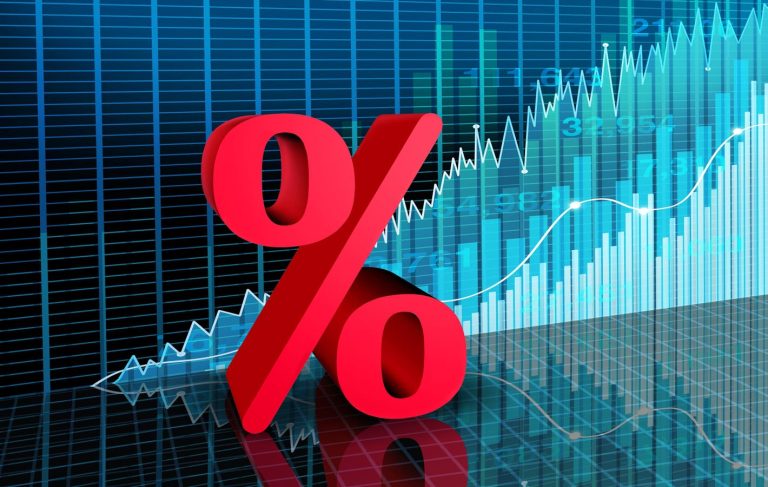Interest rates matter for all of those who want to borrow to invest or pay bills or refinance their existing debt. Yet, long-term interest rates have stayed high, even as economic activity has slowed. Higher interest rates make it more expensive for households to buy a house, invest in their children’s education and buy other large ticket items, such as cars. Mortgage rates, for instance, have recently climbed again to 6.86% by May 22, 2025 up from a recent low of 6.63% in early March of this year. Higher interest rates follow from President Donald Trump’s economic policies. Those include widespread uncertainty, chaotic and inflationary tariffs and the prospect of massive deficits associated with his “one big, beautiful bill”.
Parsing the reasons why interest rates have stayed high is complicated since there are many moving parts, but there are some indications that Trump’s policies have indeed contributed to higher interest rates. Key to understanding interest rates are those on treasury bonds. Nominal treasury interest rates serve as benchmark for other interest rates such as mortgage rates. Researchers at the Federal Reserve looked at nominal treasury rates and interest rates on Treasury Inflation Protected Securities (TIPS) to understand how things like inflation expectations and worries about the future demand for debt, for example, from massive deficits contribute to high and rising interest rates.
Long-term interest rates, in this case 10-year treasury rates, have generally been higher since December 2024 (see figure below). The stock market rally after Trump’s election started to taper off during the week of November 29, 2024, when Donald Trump posted about tariffs on social media. Daily interest rates always move with some up and down, but there was a noticeable upward shift in rates associated with Trump’s push for tariffs starting with that week.
One way of comparing interest rates during and before the Trump era then would be to compare what has happened since his election on November 5, 2024. Daily nominal interest rates have averaged 4.69% since then compared to 4.24% for the same time period before the election. That is a jump of 45 bp or an increase of more than 10%.
This is a meaningful increase. Households owed $19.98 trillion in mortgages, student loans, car loans, credit card debt, among other debts at the end of March 2025. An additional 45 bp in interest rates would mean an additional $89.9 billion in interest payments in 2025 alone. The federal government owed a total $36.2 trillion on May 21, 2025. The federal government would have to pay an extra $163 billion on this debt with interest rates that are 45 bp higher. Somewhat different time comparisons change the size of the difference, but in all cases households, businesses and governments would end up with tens of billions in additional interest payments. Those higher interest payments mean that households, businesses and governments will ultimately be left with less money to spend on other things.
The Fed’s research breaks down interest rates into key components. Those key components include expected short-term rates, which bond markets use as benchmark for longer, higher interest rates, expected inflation, the inflation risk premium, and the real term premium – the difference for holding longer term debt. Those breakdowns show a jump by 27 bp came in the real term premium, followed by an increase of 10 bp in the inflation risk, 4 bp in expected short term rates, and 2 bp in inflation expectations – with the remainder due to rounding.
The numbers alone do not provide an explanation of why interest rates are higher. There are a multitude of issues, but Trump’s erratic tariff policies and congressional Republicans’ willingness pushed by Trump to massively add to the deficits play a role.
Take the term premium as an example. This means that the yield curve has gotten steeper. Investors now want higher interest rates relative to short term rates than before Trump’s election. Bond markets likely expect demand for treasuries to go up with massive new deficits. Similar concerns have driven up long-term rates in Japan and created competition for U.S. treasury bonds, keeping U.S. rates higher. In addition, the record high economic policy uncertainty since Trump won his election as well as his willingness to blow up international agreements will likely have spooked investors, who are now asking for something extra to invest in the U.S. government.
It is not just the long term that investors are worried about. After all, short-term rates have also seen a small bump. This increase likely reflects people’s worries about the economic situation in the short term amid the risks associated with Trump’s chaotic economic policies.
The other part of the story is inflation, which is tied to Trump’s tariffs. The numbers show that heightened inflation expectations only added 2 bp to the longer-term interest rates. That may seem like good news, but inflation was supposed to come down and had been on a downward trend during the last years of the Biden administration. And, this is an addition to the 10-year inflation outlook, not what bond traders just expect next month. They expect inflation to stay higher for the longer run. Obviously, bond markets could be wrong, but for now, they predict that we are stuck with about 2.7% inflation rather than a downward trend in inflation. Trump’s tariffs are clearly the main culprit here.
The inflation risk premium has also deteriorated, adding to the worsening outlook on inflation. This risk premium was negative before Trump’s election, signaling that bond markets expected inflation to fall. It is now positive, indicating that markets expect inflation to increase. Markets expect Trump’s policies to put upward pressure on inflation.
Trump’s inflationary tariff policies and his willingness to blow up federal deficits in cooperation with congressional Republicans have contributed their part to higher interest rates over the past few months. Those higher rates take more money out of people’s pockets right now, even before the full effects of Trump’s policies will be felt. Many things – houses, cars, education, to name a few – have already gotten more expensive because of the chaotic and fiscally irresponsible economic policies that Trump and Congress are pursuing.
All calculations are the author’s. The calculations are based on Don Kim, Cait Walsh (Columbia Business School), and Min Wei (2019). Tips from TIPS: Update and Discussions. May 21, 2019. Feds Notes. Washington, DC: Federal Reserve. The researchers have updated the relevant daily data through the end of April 2025.
Read the full article here









